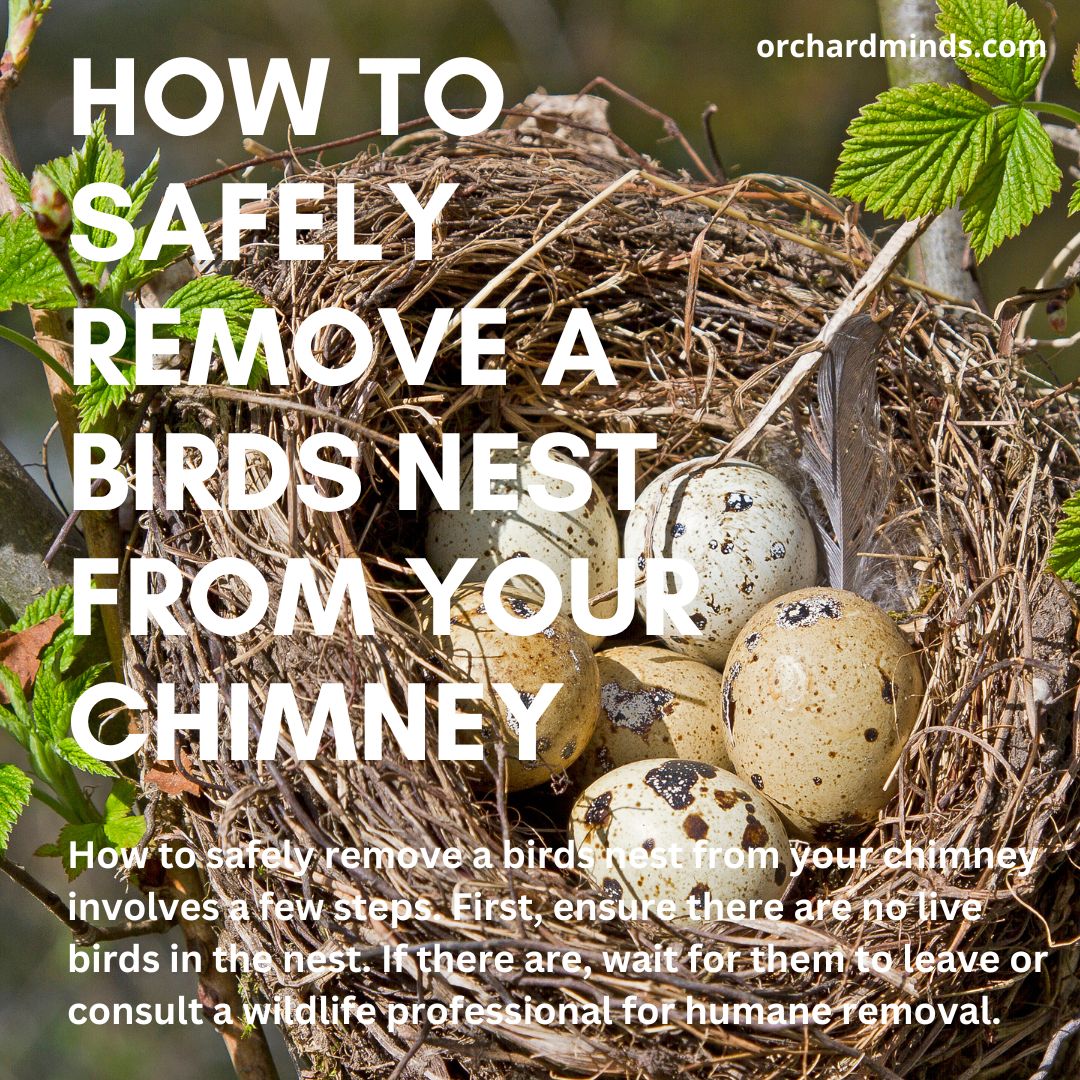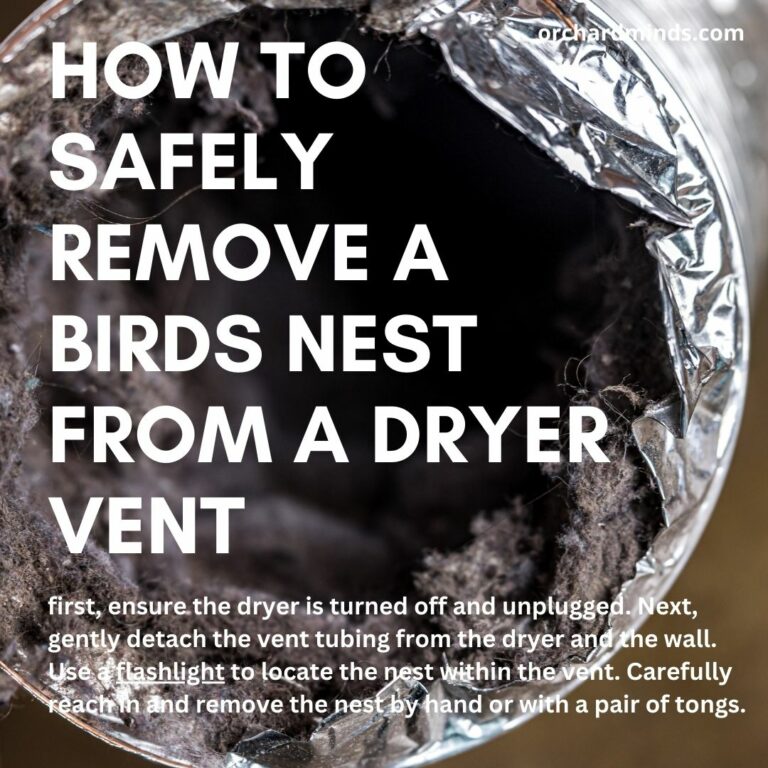How to safely remove a birds nest from your chimney involves a few steps. First, ensure there are no live birds in the nest. If there are, wait for them to leave or consult a wildlife professional for humane removal. Once the nest is vacant, wear protective gear, including gloves and a mask, to avoid exposure to contaminants. Use a long, flexible brush or chimney rod to gently break apart the nest and remove it in sections, working from the top down. Be cautious not to damage the chimney liner or blockage. After removal, have your chimney professionally inspected and install a chimney cap to prevent future nesting.
How do you stop birds from nesting in your chimney?
Preventing birds from nesting in your chimney can be achieved by installing a chimney cap or bird guard. These devices create a barrier that keeps birds out while allowing proper ventilation for your chimney. Regularly inspect and maintain the cap to ensure it remains effective, and consider professional installation to ensure a secure fit. Additionally, seal any gaps or cracks in the chimney structure that may serve as entry points for birds.
Safely Removing a Bird’s Nest from Your Chimney: A Step-by-Step Guide
Step 1: Confirm Nest Vacancy Before you begin removal, make sure there are no live birds in the nest. Observe the chimney for a period to ensure the birds have left. Avoid disturbing the nest during this time.
Step 2: Gather Protective Gear Wear protective clothing, including gloves and a mask, to shield yourself from contaminants present in the nest, such as bird droppings, parasites, and debris.
Step 3: Assemble Necessary Tools Gather tools for nest removal, including a long, flexible brush or chimney rod, a bucket, and a flashlight. Ensure the brush or rod is long enough to reach the nest safely.
Step 4: Open the Damper. Open the chimney damper to allow easier access to the nest. The damper is typically located just above the firebox inside your home.
Step 5: Begin Removal from the Top Using the chimney rod or brush, gently break apart the nest from the top down. Work slowly and cautiously to prevent damaging the chimney liner or causing debris to fall into the fireplace.
Step 6: Collect Nest Debris As you dislodge sections of the nest, carefully collect the debris in a bucket. Please dispose of the nest and its contents properly, following local regulations.
Step 7: Inspect and Clean Once the nest is entirely removed, inspect the chimney to ensure there are no remaining obstructions or debris. Clean the chimney thoroughly to remove any residual contaminants.
Step 8: Install a Chimney Cap. Prevent future nesting by installing a chimney cap or bird guard. These devices create a barrier that keeps birds out while allowing proper ventilation.
Step 9: Professional Inspection After nest removal and cap installation, have your chimney professionally inspected. A certified chimney sweep can assess any potential damage and ensure your chimney is safe and functional.
When can I expect birds to nest in my chimney?
Birds typically nest in chimneys during the nesting season, which varies depending on the bird species and location. In North America, this season often starts in early spring and can extend into early summer. However, the exact timing may vary based on your region and the specific bird species in your area.
What species of birds nest in chimneys?
Several bird species are known to nest in chimneys. Common chimney-nesting birds include sparrows, starlings, swifts, and swallows. These birds are attracted to the sheltered and protected environment that chimneys provide for nesting.
What are the signs of birds in your chimney?
Signs of birds in your chimney may include chirping or fluttering sounds, debris falling into the fireplace, and an unpleasant odor caused by droppings. Occasionally, you may spot birds entering or leaving the chimney, especially during the nesting season.
How can I stop a bird from nesting in my chimney?
To prevent birds from nesting in your chimney, consider installing a chimney cap or bird guard. These devices create a barrier that keeps birds out while allowing proper ventilation. Regularly inspect and maintain the cap to ensure its effectiveness. Additionally, seal any gaps or cracks in the chimney structure that may serve as entry points for birds. Taking these preventive measures can help deter birds from nesting in your chimney and maintain a safe and functional fireplace or heating system.
FAQs about How to safely remove a birds nest from your chimney
When do birds typically nest in chimneys?
Birds generally nest in chimneys during the nesting season, which varies by species and location but often occurs in early spring to early summer.
What bird species commonly nest in chimneys?
Common chimney-nesting birds include sparrows, starlings, swifts, and swallows, among others. The specific species may vary depending on your region.
What are the signs of birds in my chimney?
Signs of birds in your chimney can include chirping or fluttering sounds, debris falling into the fireplace, and an unpleasant odor caused by bird droppings. Occasionally, you may also see birds entering or leaving the chimney.
How can I prevent birds from nesting in my chimney?
To deter birds from nesting in your chimney, consider installing a chimney cap or bird guard. These devices create a barrier that keeps birds out while allowing proper ventilation. Regular maintenance of the cap and sealing any chimney gaps can further prevent bird entry.
Are there humane ways to remove a bird’s nest from my chimney if it’s already occupied?
If you discover an occupied bird’s nest in your chimney, it’s important to avoid disturbing it. Wait for the nesting season to pass, and once the birds have left, you can safely remove the nest. Alternatively, consult with a wildlife professional for humane removal if necessary.
Can birds nesting in my chimney pose safety concerns?
Yes, birds nesting in chimneys can pose safety concerns, including chimney blockages, damage to chimney liners, and the risk of fires due to accumulated nesting materials. Proper prevention and maintenance are essential for safety.
How often should I inspect and maintain my chimney to prevent bird nesting?
Regular chimney inspections and maintenance, typically on an annual basis, can help prevent bird nesting and ensure the safe and efficient operation of your chimney and fireplace.



Leave a Comment